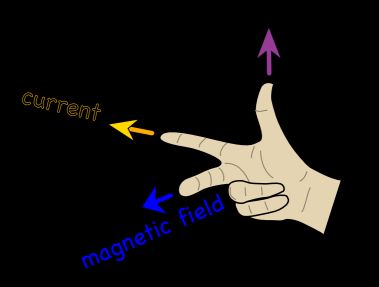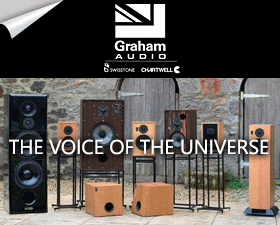Greetings from Melbourne, got my mojo back and enjoying the music once again!
Nice to see this thread, as it is certainly one up my ally!
I would have thought that the question/topic should be ribbons vs. electrostats, but since maggies have been mentioned, it makes the comparison a bit more focused.
Caesar, I guess it all depends on what one person actually wants in terms of "overall sound, soundstage presence and musicality" based on a reference standard.
My reference standard is the "absolute sound". I clearly remember back in the student days in Chicago, listening to several live performances by Kurt Elling, George Benson, Dianna Krall, Casandra Wilson, Liz Wright, Tracy Chapman, and of course the masterful Chris Botti, which was one of my all time favourites, including Patricia Barber. That sound is my reference, and I have built my system around that standard.
Now by no means am I claiming that the present system is capable of delivering those live performances, not quite. However, in terms of inner detail, spontaneous transients, remarkable depth of soundstage and imaging, and that special "enveloping sound" just shines through with Conrad Johnson amplification and Quad electrostats.
With ribbons, I have previously owned the following: MGIIIa, MG3.3, MG3.5, and Apogee Diva's.
With electrostats, I have owned: Quad ESL63, Martin Logan CLS IIZ, Martin Logan Aries, and the Sequel III.
Overall both designs were great, however one of each certainly stands out; with ribbons the Apogee's are far by still the best! Have been and will always be. No maggies comes even close, although the MG20 series is not bad...
With electrostats, the Martin Logan's can sound a bit thin, and have bass driver integration problems, although I did like the SL3 for a while. The electrostat ML speaker system that I really enjoyed but could never afford at that time was the awe-inspiring Martin Logan Statement Evolution III, and now that's what I call an electrostat!
If anyone has ever auditioned the ML Evolution Statement III, it is simply a treat!
Having said that, it all depends on the person's interests and source material, plus of course the amplification. Some prefer SS and others Tubes...
What I have experienced and learnt along the way is just to keep the system as "simple" as possible. Perhaps just a pre-power combination and a fine pair of speakers to whatever your liking is. The rest will depend on the room and cabling accessories. Fine tuning the system towards "your reference sound" should be the goal, and currently I have achieved that. Therefore, I do not intend to upgrade for a very long time...
If the question also included dynamic driver types, I could only think of two speaker systems that I could certainly have as a second system, and that is the Wilson Alexandria's and SF Stradivari. With the right tube amplification these systems are simply superb! They're probably the ultimate in terms of TAS. The level of performance shifts up to a totally different league, and there are so many factors you have to consider under these circumstances, including insurance!
Keeping with my motto, simpler the better, and less on the premium with insurance, I think it's time for that scotch and electrostatic-tube bliss...
Cheers to all, RJ
Nice to see this thread, as it is certainly one up my ally!
I would have thought that the question/topic should be ribbons vs. electrostats, but since maggies have been mentioned, it makes the comparison a bit more focused.
Caesar, I guess it all depends on what one person actually wants in terms of "overall sound, soundstage presence and musicality" based on a reference standard.
My reference standard is the "absolute sound". I clearly remember back in the student days in Chicago, listening to several live performances by Kurt Elling, George Benson, Dianna Krall, Casandra Wilson, Liz Wright, Tracy Chapman, and of course the masterful Chris Botti, which was one of my all time favourites, including Patricia Barber. That sound is my reference, and I have built my system around that standard.
Now by no means am I claiming that the present system is capable of delivering those live performances, not quite. However, in terms of inner detail, spontaneous transients, remarkable depth of soundstage and imaging, and that special "enveloping sound" just shines through with Conrad Johnson amplification and Quad electrostats.
With ribbons, I have previously owned the following: MGIIIa, MG3.3, MG3.5, and Apogee Diva's.
With electrostats, I have owned: Quad ESL63, Martin Logan CLS IIZ, Martin Logan Aries, and the Sequel III.
Overall both designs were great, however one of each certainly stands out; with ribbons the Apogee's are far by still the best! Have been and will always be. No maggies comes even close, although the MG20 series is not bad...
With electrostats, the Martin Logan's can sound a bit thin, and have bass driver integration problems, although I did like the SL3 for a while. The electrostat ML speaker system that I really enjoyed but could never afford at that time was the awe-inspiring Martin Logan Statement Evolution III, and now that's what I call an electrostat!
If anyone has ever auditioned the ML Evolution Statement III, it is simply a treat!
Having said that, it all depends on the person's interests and source material, plus of course the amplification. Some prefer SS and others Tubes...
What I have experienced and learnt along the way is just to keep the system as "simple" as possible. Perhaps just a pre-power combination and a fine pair of speakers to whatever your liking is. The rest will depend on the room and cabling accessories. Fine tuning the system towards "your reference sound" should be the goal, and currently I have achieved that. Therefore, I do not intend to upgrade for a very long time...
If the question also included dynamic driver types, I could only think of two speaker systems that I could certainly have as a second system, and that is the Wilson Alexandria's and SF Stradivari. With the right tube amplification these systems are simply superb! They're probably the ultimate in terms of TAS. The level of performance shifts up to a totally different league, and there are so many factors you have to consider under these circumstances, including insurance!
Keeping with my motto, simpler the better, and less on the premium with insurance, I think it's time for that scotch and electrostatic-tube bliss...
Cheers to all, RJ

















